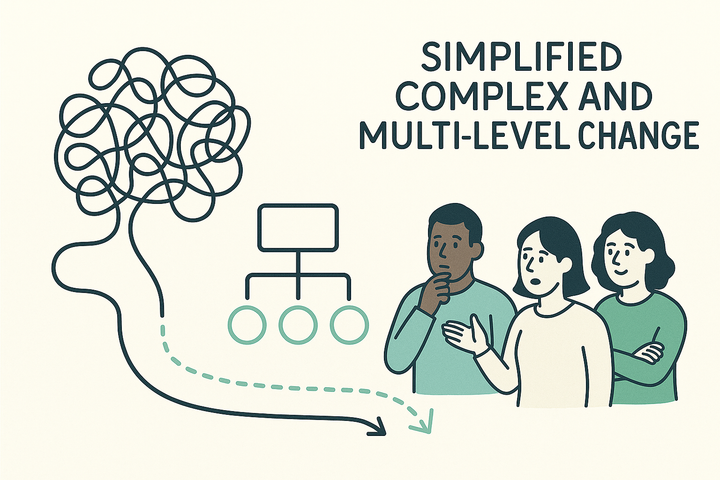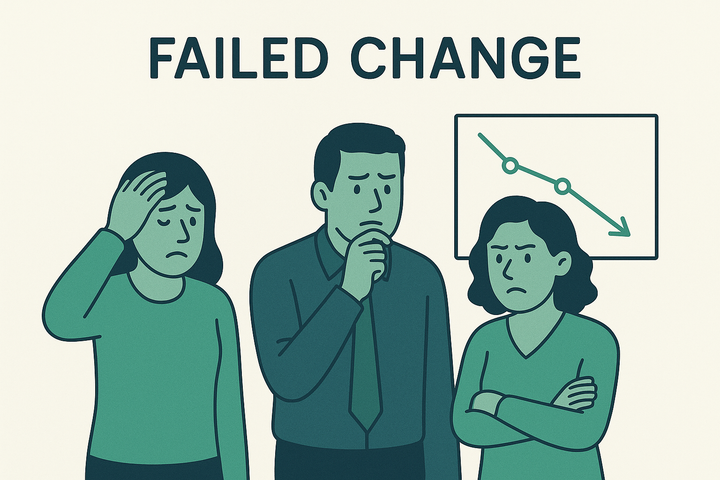Don’t Overconstruct the Plan – Get the Basics Right and Iterate
The best change comms plans aren’t overbuilt. They’re flexible, focused, and designed to adapt. Here’s how to plan just enough to move — and then learn, adjust and keep going.

When the plan becomes the problem
You’ve seen this happen.
A major change programme kicks off. Leadership asks for a full communications plan — every message, mapped against every audience, across every stage of the next 12 to 18 months. The result is a beautiful spreadsheet. A colour-coded timeline. A library of draft messages, toolkits and cascade packs.
But while the team is building the plan, the change is shifting. Leaders evolve their language. Staff sentiment moves. Questions emerge that weren’t anticipated. By the time the plan is finalised, it’s already out of date.
It looks thorough. But it’s brittle.
Because change doesn’t run on rails. And your plan shouldn’t either.
Why organisations overconstruct their comms plans
It usually comes from a place of good intention. Leaders and comms teams want to:
- Show credibility
- Pre-empt risk
- Get ahead of confusion
- Demonstrate control
But in practice, trying to map everything upfront creates a false sense of security. Worse, it diverts focus away from what actually matters — whether the message lands, and whether it moves people.
In fast-paced, high-stakes change, complexity can become a comfort blanket. But more plans don’t mean more impact. They often mean more noise.
The hidden risks of over-planning
Overconstructed comms plans often lead to:
Delay
You spend so much time building the plan that the moment passes. Or the message loses urgency.
Rigidity
You’ve committed to messaging sequences that don’t reflect where people actually are. The message stops being responsive.
Exhaustion
Comms teams are stretched producing content that may never get used, or gets buried in the cascade.
Disconnection
You build a plan around an idea of the organisation, not the real, shifting reality of how people are feeling and responding.
And worst of all, you start serving the plan rather than the people.
Why short cycles work better
One of the smartest shifts you can make is to plan in short, iterative cycles.
Not because you’re under-prepared, but because you don’t know what will happen when your message hits the real world.
You might:
- Overestimate how much people already know
- Underestimate how much fear or confusion is in the system
- Discover that what’s clear on paper sounds tone-deaf in conversation
- Get unanticipated feedback that shifts the message itself
The moment your message reaches people, the plan comes into contact with reality. And as every strategist and soldier knows, most plans don’t survive first contact.
That’s not failure. That’s the point.
If you’re listening, you’ll adjust.
Get the basics right — then build as you go
You don’t need a 30-page plan. You need a foundation that moves.
Here’s what “the basics” actually look like:
- A clear narrative: What’s the story? Why is this happening? What’s the ask?
- Leader alignment: Are your senior sponsors saying the same thing, in the same tone, with the same conviction?
- Manager readiness: Are line managers prepared to convey the message, answer questions and handle reactions?
- Audience insight: What do different groups know, feel and need right now?
- Feedback loops: How will you know if the message landed? And what will you do with what you learn?
If you can answer those questions, you’ve got enough to move. Then you iterate, not improvise. You adjust with intelligence.
How to take an iterative approach to change comms
- Plan in four-to-six week blocks — it’s long enough to create rhythm, short enough to adapt
- Anchor your messaging in phases of understanding, not arbitrary calendar dates
- Create modular content — core messages that can flex for different teams, roles or events
- Start small — test tone and delivery with a few groups before scaling
- Build a message spine that’s clear, repeatable and easy to update
- Treat every communication moment as a mini diagnostic — what did we learn, and what do we do next?
This isn’t reactive. It’s responsive.
What good looks like
A good comms plan:
- Gets the message moving early — before the perfect assets are ready
- Gives leaders and managers the tools to adapt with confidence
- Builds on lived feedback, not theoretical assumptions
- Keeps the organisation focused on meaning, not mechanics
- Evolves with the change, not against it
It’s a working plan. Not a finished product. Because communication in change isn’t about control. It’s about coherence.
Final thought
Change moves. People move. The story moves.
So instead of overconstructing the plan, build just enough to get traction.
Then listen. Learn. And keep going.
Clarity beats complexity. Rhythm beats rigidity.
And responsiveness beats perfection — every time.
Want to check if your comms plan is built to flex?
Start with the Sound & Signal Review — our practical, plain-speaking diagnostic that shows what’s landing, what’s missing and where to focus next.
Or, if you’ve got a plan but momentum is slipping, the Rapid Action Accelerator helps you reset quickly — realigning your narrative, tools and team in a matter of days.



